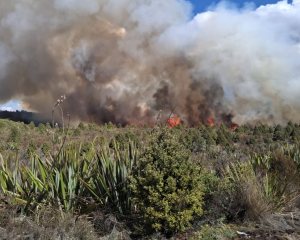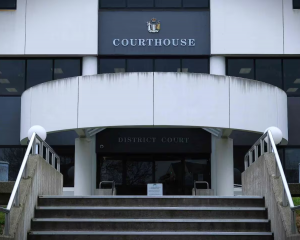Part-time soldiers from a new "high-readiness reserve" force could find themselves in the line of fire alongside Regular Forces as part of a mooted cost-cutting review.
The review says reserves are much cheaper than Regular Force members to maintain while not on deployment and suggests, for example, that if the New Zealand Defence Force was to replace 1000 Regular Force members with 1000 members of a new "high-readiness reserve", it could save $49 million in four years.
"... costs could be saved if, for example, more [reserve force] personnel were employed on operations - particularly (but not exclusively) at the lower end of the conflict spectrum".
Replacing some full-time soldiers, sailors and pilots with the new type of part-time reserve is one of the options the New Zealand Defence Force is considering as it works out how to save $400 million by 2015.
An external review of the reserve force, commissioned by previous minister of defence Dr Wayne Mapp through the Chief of Defence, recommends re-proportioning the Regular Force and reserve force (also known as the Territorial Force) as one way to make significant cost savings without losing operational military capability.
The report is one of several pieces of work, including a value-for-money review, which have identified options for reaching the savings target.
Members of the high-readiness reserve would spend 40 days a year in service and be deployed on a military operation with the Regular Force once every four years.
They would be integrated into Regular Force units.
Employers would be paid $5000 a year by the New Zealand Defence Force if they employed a member of the reserve.
The 2011 report from former chief of army Major-general (Rtd) Lou Gardiner, international security specialist Dr Beth Greener and merchant banker and New Zealand Army colonel Paul Bayley, contains 43 recommendations on how to reconfigure the reserve force.
The report recommends introducing a second and third tier of reserves - the active reserve, which would be in local communities, provide local civil emergency response and youth training etc; and the standby reserve, for former regular force or reserves members who have a service liability under the Defence Act, or who wish to stay linked with the Defence Force.
It also recommends merging the six reserve battalion groups into three support battalions, based in Auckland, Wellington and Christchurch, and then divesting unneeded infrastructure, including the Arch Hill facility in central Auckland, home of the 3rd Auckland and Northland Battalion.
There is no reference in the report to the Kensington Army Hall in Dunedin, but it does suggest maintaining the New Zealand Defence Force presence in communities could be done relatively cheaply by co-locating with other defence force users and hiring smaller buildings.
A briefing to Defence Minister Dr Jonathan Coleman said the merger would also represent cost-savings in the loss of up to 600 reserve positions.
The report writers said many of the changes recommended were already under way, but integrating reserve and Regular Force personnel and having part-timers adopting more significant roles would still present a significant challenge to existing structures and institutional culture.
The defence force had a "clear investment choice", to reduce the size of the regular force and invest the savings in high-readiness reserves.
The New Zealand Defence Force has already achieved savings through various means, including "civilianisation" and cutting military bands.
Asked if the reserves review had been considered and whether any of its proposals were being taken further, a New Zealand Defence Force spokeswoman said the request could take "a little while" to answer.











